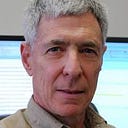Sally Kabat
Works on Paper and Canvas


Sally Kabat — 1914–2015
Sally Kabat was born Sally Lennick in Toronto on May 11, 1914. Her parents were immigrants from Eastern Europe and spoke Yiddish at home. Her father was a tailor, and the family lived above his shop at 705 Queen Street West. (Her brother, Ben, who was four years younger, became a well-known actor in the Yiddish theater in Toronto). At Toronto’s Central High School of Commerce, Sally became interested in art and was friends with the young Canadian artist Nathan Petroff, whose work portrayed the living and working conditions of factory workers. In 1939, she moved to New York City to study at the American Artists School with Anton Refregier.
In the early 1940s she met Elvin Kabat, a microbiologist/immunologist at Columbia University, to whom she was married for fifty-seven years until his death in 2000. While raising three sons, she painted and sketched portraits, including many self-portraits, live models, still lifes, landscapes, animals in the zoo, and abstract designs. In the 1950s and 1960s she traveled widely and spent two sabbatical years in Paris, where she was particularly productive. During 1966–1967, she studied printmaking (gravure) in Paris.
From the mid-1970s to the early 1990s, she was based in Bethesda, Maryland, on the campus of the National Institutes of Health, where her husband spent one-half of each week, dividing his time between Bethesda and New York City. She enrolled in Montgomery College, where, for nearly twenty years she took art classes, including life drawing, and studied print-making. During this period, she traveled with her husband, accompanying him to conferences and workshops in Europe, South America, Asia, and Africa. These trips provided her with rich material for portraits and landscapes. In 1991 she and her husband spent another sabbatical in Paris. In 1993 she moved to Woods Hole, on Cape Cod, and in 2000, she moved to Lasell Village in Auburndale MA, where she lived until her death. Lasell Village hosted an exhibit of her work in 2014.
The work
My mother never attempted to break into the art world and never even put together a portfolio of her best work. It is hard to know whether this was due to a lack of ambition or to a general lack of self-confidence stemming from her emotionally-impoverished upbringing — or to a combination of the two. What is clear is that, from her early twenties to her nineties, she was drawn to looking and to taking in the people and things she saw around her and attempting to get them down on paper or canvas. Often, she saw the world from an unusual angle and was drawn to things that most people would fail to notice, or find of little interest — the back of someone’s head, construction cranes looming over a city, the stern of a rusted trawler with its superstructure and winches, the arthritic branches of a bare tree, an elephant viewed from behind. In addition, she sketched hundreds of portraits and self-portraits, which in many cases capture an absolutely distinctive living, breathing person. She did many hundreds of life drawings, fascinated by different body types and different poses, at times producing shocking and powerful images, which one might not expect from someone with her reserved nature. (I’ve included a number of “gesture drawings” done from short — often one-minute — poses, for their striking fluidity and the grace of their lines). She was drawn to landscapes, cityscapes, seascapes, courtyards, street scenes, churches, mountains, views through a window, stills lifes, animals in the zoo, and abstract designs, which she rendered in oil, acrylic, watercolor, pastels, conte crayon, pen-and-ink, and in lithographs and etchings.
She was a bricoleur, a nomad, observing her surroundings — both places she knew well, and places she was seeing for the first time — with no prior assumptions about what was in front of her. When she drew a tree, an elephant, a bison, or someone’s portrait, it was as though she was trying to commune with that object’s/that person’s essence.
If, at times, her sketches are eerily reminiscent of Picasso or David Hockney, or some other artist, I don’t think this association is the result of her trying to imitate anyone. Rather, I believe she was just working in her own idiom and was totally preoccupied with seeing what came of her efforts. To say that, occasionally, her sketches or paintings make one think of Picasso, or Hockney, or Rembrandt, or whomever, is merely to say that they are good, that she succeeded in capturing a figure or a face in a way that delivers a shock of recognition
I have photographed over 1,500 works on paper and canvas, including sketchbooks and loose drawings, watercolors, etchings, lithographs, oil paintings, etc. Although I have gone through forty-three sketchbooks and hundreds of loose works, there remains roughly one-third of her work that I have not yet had the chance to look at. Thus, the works included here represent only a small fraction of her total output.
Note: The images below can, in most cases, be enlarged by clicking on the image.
Geoffrey Kabat
New Rochelle NY
Another way of seeing
















Life drawings






























Self-Portraits and Portraits



























Landscapes, interiors



























Still Life's




Animals in the zoo




Oil miniatures on bakelite


Sally at ninety-eight and one hundred and one years


